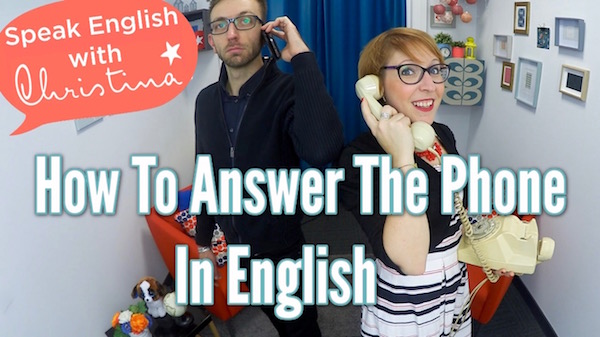
Today, let’s review a few techniques and specific words you can use to make your small talk conversations flow in English!
Hi there! I’m your English coach Christina, welcome to Speak English with Christina, where you’ll learn American culture and business know-how to become confident in English.
Small talk is a great way to create connections. To have successful small talk in American culture, you need to create a friendly, relaxed atmosphere, and focus on common ground. Today, you’ll get useful tips to make this easier for you.
Plus tomorrow, big news! You’ll have the chance to become a master of small talk in English! We open registration for my course Successful Small Talk tomorrow, and when you join, you get much more in-depth advice, lessons and exercises to practice small talk and feel comfortable in everyday conversations. Be sure to sign up to get your invitation, in the link below this video.
Use American conversation style
Before we jump into the specific vocabulary you can use to create connections, you need to understand some context from American culture.
In some cultures, especially in France for example, a “good conversation” is often lively, with frequent interruptions and friendly disagreements. Conversations can easily become animated debates, and that’s fine!
But in the US, a contrarian attitude, where you try to debate and challenge others’ opinions, can be seen as aggressive. In small talk, we try to find similarities, and make connections based on the things we agree on. And when we disagree, we tend to do it gently, with the words we’ll look at now.
Use little words for flowing small talk
The word Actually can be very useful for your conversation. Careful, for many Latin-based languages, like French, Spanish, Portuguese and Italian, “actually” is a false friend! It means “in fact”, or “in truth.” It’s very useful to gently correct someone, or to agree enthusiastically!
If someone asks you, for instance:
So I heard you’re working with Juliet?
You can gently correct them with: “Actually, I’m working with Janet, OR you can enthusiastically confirm their statement with “Yes I am, actually!”
We use “actually” very often for corrections. But be careful: making too many corrections over and over and over can be seen as aggressive and rude. Sometimes, you can simply let people be wrong and go with the flow.
In American culture, you want to keep small talk positive, so when you can agree with the other person, do it loud and clear. For that, you can use the words: That’s true, and you’re right.
As in:
– So I heard Juliet is a good boss, right?
– That’s true, she’s amazing. / – You’re right, we’ve made a lot of progress thanks to her.
People love to hear that they’re right, so say it! It has to be sincere, though.
Finally, here’s a special expression you can use to sound just like an American: it’s the phrase I hear you. It’s not about the sound of their voice, it’s about empathy, especially with bad situations. With “I hear you,” you’re saying “Yeah, I understand, we share a similar experience and point of view.”
For example:
– Oh no, I can’t find my glasses. Why do I always lose them?
– Yeah, I hear you. I’m always putting them down, looking for them for 10 minutes, and seeing they were just in front of me. Happens all the time!
How to point out common ground
Small talk isn’t only saying “Yes” and “I agree”, though! It’s about creating a connection, and a good way to do that is by pointing out common ground. It’s anything that you have in common, a hobby, an experience or an opinion that you share.
People like people who share their experiences and way of life! And more importantly, it’s a positive way to keep the conversation flowing – that way, both of you can add something about the topic at hand.
To point out a common ground, you can say “Me too”, or “So do I”. And if you can add a question after it, it will help the conversation too.
For instance:
“I went to an Italian restaurant yesterday.”
“Me too! Where did you go?”
Technically, after a negative sentence, we use “Me neither” or “Neither do I.”
“I feel like I’m the only one in the world, but I don’t really like Game of Thrones.”
“That’s funny, neither do I!”
Notice how we use “That’s funny” to point out a coincidence, by the way!
Finally, the art of small talk also involves finding a bridge. If the other person is sharing something, you want to find the common ground, without looking like you want to only talk about yourself. There are a lot of possibilities.
Let’s say your conversation partner tells you: “We went to Aspen, in the Rockies, for vacation last year, and got to try cross-country skiing for the first time. Hard stuff!”
How can you answer? Well, try to find a way to find a common ground with this sentence. Maybe you’ve visited the Rockies, you like cross-country skiing, or simply have something to say about winter sports.
Be positive, and try to use a word we’ve seen, like “Actually,” “I hear you”, “That’s funny” or “You’re right”. Here’s a challenge for you to try this: Write your response in the comments below! Be creative!
Successful Small Talk Bonus videos
You’ll find a lot more exercises and in-depth lessons to master small talk in English with my course Successful Small Talk. Registrations open tomorrow October 17, 2018. Be sure to go to this page and join my list so you get your invitation. I don’t want you to miss this chance! Thanks for watching and I’ll see you next week!

More good stuff...
Click the image to learn more









thank you
Thinks for your lessons i have found many important things in them
Vow, that’s amazing you did it alone or there were more people?. actually, I’d like to do it myself. you must tell me more about the difficulties you have to face to prepare it, the equipment, how to fit myself, and so on-
thanks
Your post was really helpful and most of my doubts were cleared.
Can we use “Correct!” instead of “That’s true” or “you’re right”?